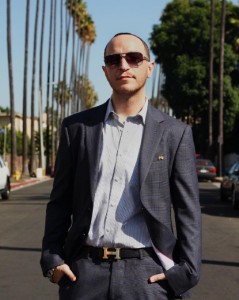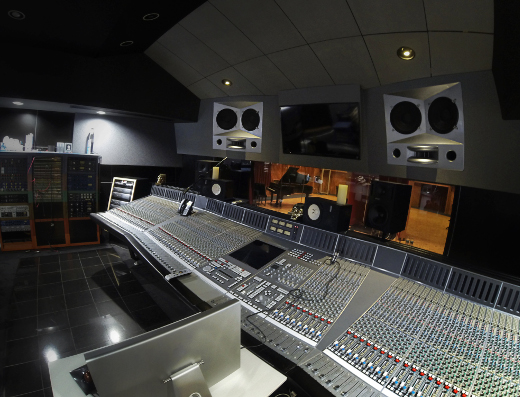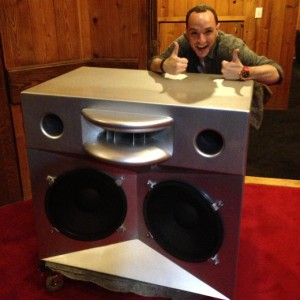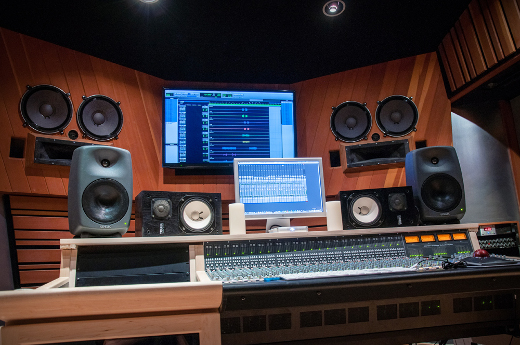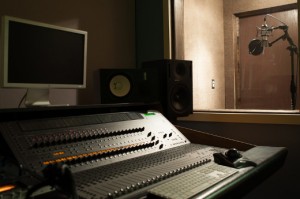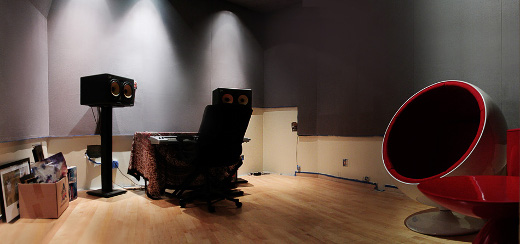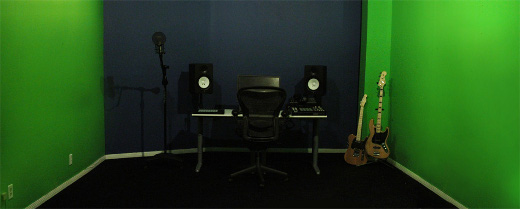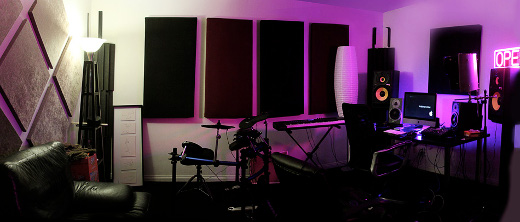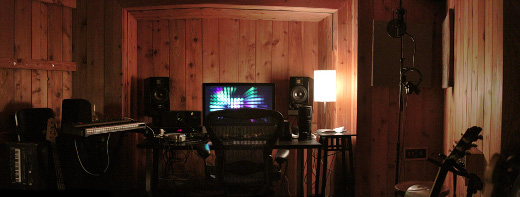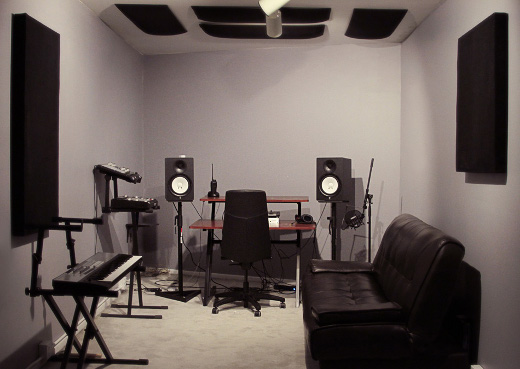17 Hertz Studio: A True (North) Hollywood Story
A beautifully renovated, 10,000 sq. foot studio space in the hip NOHO Arts District of North Hollywood seems perfectly placed. With three beautiful, state-of-the-art studios and five smaller production rooms, it feels like the ideal addition to a creative, up-and-coming area of LA.
But it came dramatically close to never happening at all; becoming instead yet another trendy restaurant or mini-mall.
The once bustling and popular home of One on One Studios, home to the likes of Burt Bacharach, Dionne Warwick, Etta James and Metallica’s Black Album, had fallen so far from grace that the landlord was ready to demolish it. He got within a week of the bulldozers.
Indeed, the story of 17 Hertz reads like that of an LA screenplay: The building and the current owner, Jason Gluz, found each other after hitting the rock bottom foundation of a studio floor.
REWIND…
The original 17 Hertz, where Gluz first worked with some of his local rap artists, was up in the Bay Area and had hit a plateau after 2005, soon to be followed by a downturn. The owner moved to Vegas to start JBWKZ Records and in 2011 sold the company to Gluz who wanted to move to what he felt was the new center for creativity: North Hollywood.
Bad luck greeted him after he poured countless hours and dollars into a space on Burbank Blvd. The landlord of that building was foreclosed upon and Gluz was out of a studio space.
Following this upset, the Bay Area 17 Hertz building was also slapped with a foreclosure.
Gluz says he felt incredibly upset, and in fact, demolished by this endless wave of bad luck.
Fitting for this (North) Hollywood story however, a phone call from a friend tipped Gluz off about a place ready to fall on Lankershim Blvd.
He went to check it out.
“It was thrashed,” he says. “But it had so much potential. When I walked in, I literally fell to my knees. I had never seen something like this before, and it was my dream. Bigger than my dream right in front of my eyes. I felt obligated to bring it back to life.”
When Gluz walked through in 2012, flashlight in hand, he couldn’t even fully see the space, but talked the owner into letting him take it, no money down. He had 90 days to turn it into something.
With nothing left to lose, Gluz broke the lease on his apartment, moved into the studio and got to work.
“I felt for the first time in my life that I was exactly where I was supposed to be,” says Gluz.
GETTING TO WORK
Gluz’s passion for his studio and his work is palpable.
Even without talking to him, seeing the transformation from “demolition-ready” to a state-of-the-art recording facility is a clearly tangible representation of that passion.
Bringing this studio space back to life was no small task. From battling 12 5-ton AC units to avoiding the sounds of their neighbor, the LA subway system, Gluz had more than a couple of hurdles between him and his dream studio.
Because of the history of the studio however, he didn’t want to completely gut and glam the former One On One into the 21st century. “I wanted to definitely keep the vintage feel of the wood that was left from the 70s but I wanted to modernize some of the aesthetics,” he says.
“Also, some of the designs were just out of date and now there are much better ways to handle problems. For example, the foam on the walls that rotted away; there’s much better absorption material today than there was back then.”
This blend of old and new is a cornerstone of 17 Hertz. Gluz spent months tracking down original components for a Van Hoff speaker cabinet just so he wouldn’t have to “recreate the wheel.”
At the same time, he brought in Dale Peterson who completely remodeled the Studio A control room, stripping it of all the old wood, opting instead for a more modern color scheme complete with silver painted Augspurger DSP Mains.
Those Augspurgers are their own beast in 17 Hz. System designer Professional Audio Design (PAD) reviewed the soffits, which had a different speaker previously, and determined that GA215H Classic horizontal Dual 15” cabinets without modifications to either the soffits or cabinets.
The bar was high: be able to produce at least 120 dB, and deep lows to accommodate all pop genres including hip hop, rap, pop, EDM, dance and reggae, all of which are full of low frequency info. GA218S subs were selected, which have two of PAD’s 18” drivers producing accurately to 20 Hertz, with each driver capable of handling 1600 watts with over 2” of excursion.
Power to the system comes via DSP-3/2500 amp modules which have 3-way DSP crossovers, EQ and phase control, and three amp channels: 1000W for Low Frequency, 1000W for Mids and 500W for the horn.
“The system tuning is done via USB from PC and allowed for total control of the system with 16 Bi-Quad filters per band, with fully adjustable EQ, delay, phase and speaker protective limiting,” PAD’s Dave Malekpour explains. “The result of the system is clear and accurate reproduction with lows fairly flat down to about 24hz and 3 dB down point of 20hz — the system measures at 120 dB continuous and 125 dB peaks. 17 Hz’ Augspurgers are finished in Cosmic Silver Metallic, which looks stunning and complements the SSL 9000 fitted in the control room.”
The new Augspurgers more than satisfy Gluz’ demands for a monitor upgrade in his main room – loudness, accuracy, and pleasing aesthetics were all requirements.
“In previous systems I’ve purchased and used in the past, I used regular amplifiers, but we’d always have problems,” he notes. “Someone would come and turn the EQ knobs, or turn up the levels of the amps. It became very difficult to keep the sound of the room consistent and we’d have to constantly be retuning the room. Also, clients would just blow speakers left and right. This new system stopped all of that.
“Also with the crossover, EQ, compressor and amplifier being in one location, the way it was setup, we haven’t blown one speaker. They sound amazing — I haven’t received a single complaint yet.”
The audio gear in the rooms reflects this same mentality. Gluz was sure to get what he considers to be “standard” studio equipment, such as Neve 1073 preamps, UA 1176 compressors, LA2As and Tube Tech CL1Bs.
Then he branched out, trusting his ears and vision by investing in, for example, the complete Chandler outboard gear set, finding that clients appreciated this unique find to go along with the tried and true.
As for consoles, Gluz says that was the most difficult choice. In the end, he again stuck with the paradigm of blending the best of the old world with the best of the new.
In Studio A, Gluz has an SSL 9080J, previously owned by Bryan Adams, juxtaposed by the modern SSL AWS 900+ SE in Studio B.
“I ended up choosing Bryan Adam’s 9080 Channel SSL J because I believed it had a lot of history, hits and magic in it, just like 17 Hertz. It was a no brainer!” he says. “The AWS 900 +SE I have in my B room was perfect for the hip hop and smaller clients who need more of a controller than a console.”
WHO’S IN
The AWS was actually Gluz’s first console purchase, made after he reluctantly agreed to rent out Studio B. “I actually didn’t want to rent out my B room at first. I had built it for me and I wanted a client to take over the A room.”
When someone like Alex Da Kid comes looking for a room, however, it’s hard to say no.
So he said yes.
Gluz held a soft opening in January of 2013 and by April, both Alex Da Kid and Ceelo Green were camped out at 17 Hertz while Gluz worked alongside in Studio A, finishing the build, design and installation. With this parallel workflow, clients and referrals poured from one studio to the newly built A room as soon as it was finished, leaving Gluz with a packed house that shows no signs of tapering.
And here’s a pro tip: put up an ad on Craigslist.
In yet another story fit for a Hollywood movie, Gluz connected with Ceelo’s people via Craigslist, getting a phone call from his camp off of an ad he posted. And Ceelo’s not the only one. Gluz has also gotten calls from Neyo and Tony Maserati via Craigslist.
“Build it, paint it, add carpet and they will come! That’s my motto,” Gluz says with a smile.
A few of the others that have come to the field of dreams include Mally Mall, Tyga, Andrew Dawson with Atlantic Records band Health, Odd Future, and people from the TV Show “The Voice.”
“It’s a creative explosion over here at 17 Hertz,” Gluz says.“Its the type of comfortable environment where there’s no suits and artists get the privacy they need to get their work done. People bump into each other in the hallway all the time and collaborations happen that you could never imagine. I think that’s my favorite part.”
A LIFESTYLE
Indeed, Gluz is incredibly proud of the atmosphere that he’s been able to create.
Blending the tremendous history of the space with a non-stop creative melting pot makes 17 Hertz not “just a recording studio, but a lifestyle.”
And whereas older studios make their money off of names from the past, 17 Hertz is vying to dish out the next musical icon.
“All other studios and large recording companies are not from our generation,” Gluz says. “I’m 28 years old, and I built the studio with my ideals, message and purpose behind it.
“It’s all about the little things combined with the big things,” he continues. “I just feel a lot of the older recording companies are jaded and burnt out because of the decline in funds since the digital era. I was never in the business during those times so it doesn’t affect my passion or drive to succeed. I am very open to new ideas and opportunities. I’ve learned that success doesn’t come without failure.”
And with this open minded, driven paradigm, Gluz is ready to take the next step. “Now that the studio is running smoothly, I am also working on a new publishing and production company. I’ll be looking for acts to sign and develop to pitch to different companies. I now have all the resources I need to really create an artist.
“I also plan on building another 17 Hertz to focus more on the residency and production side of the business,” Gluz says. “Places artists can call their home, not just work on a day to day or album to album or budget to budget basis. I want 17 Hertz to be the one-stop-shop for, music, entertainment, fashion and all forms of art.”
And as if that weren’t enough to fill his days, he also has a mind to be socially active. “I intend to start charities and non-profits to help make the world a better a place,” explains Gluz. “I want to start with putting music classes back in my old middle school.
“Without that music class, I would never have been where I am today. I want to give kids the resources they need as well as a realistic path and guide to success that can turn their dreams into reality.”
Coming from foreclosures and near demolitions, it’s clear that Gluz knows a thing or two about turning dreams into reality. Many studios around LA suffer from dwindling clientele and empty rooms, but 17 Hertz is thriving with an infectious blend of passion, creativity and drive.
“While everyone is running towards home studios, there will always be a need for state-of-the-art facilities,” Jason Gluz says. “I got sick and tired of people doing faster and cheaper. I wanted to build something with quality, meaning, purpose, passion and love. This was the opportunity to do so. And I did.”
— Eleanor Goldfield
Please note: When you buy products through links on this page, we may earn an affiliate commission.








